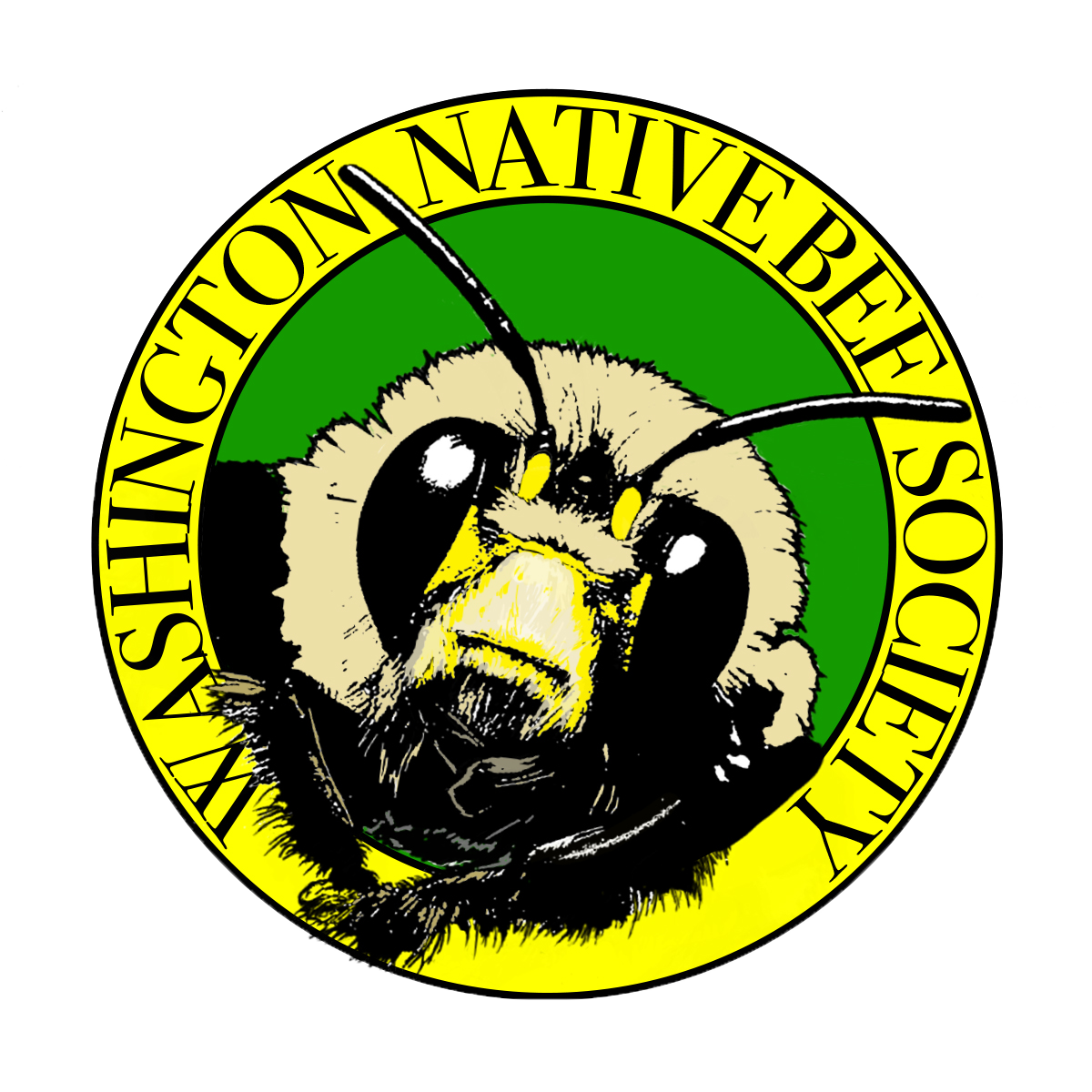First known photograph of Epeolus emiliae in the wild taken by Lisa Hill of Richland
- Elise Novitski

- Apr 9, 2024
- 3 min read
You have to wonder if the Tri-Cities is a hotbed for Epeolus and Triepeolus cuckoo bees or if WaNBS member Lisa Hill just has an eye for them. Epeolus are cleptoparasites, nicknamed cuckoo bees, because like cuckoo birds, they lay their eggs in the nests of their hosts—bees in the genus Colletes. The hosts must leave their nests unguarded while foraging for pollen because they are single mothers that work alone. Epeolus take advantage of this moment to sneak in and leave their egg in the nest. Cuckoo bees often look more wasp-like than bee-like because they lack the numerous long, pollen-collecting hairs typical of other bees.
Lisa had only been taking photographs of insects and posting them to iNaturalist for a few months when Dr. Thomas Onuferko, a bee taxonomist and expert on Epeolus, took notice of her observations. He contacted her to ask for permission to include her images in an open-access academic journal article, writing
“I recently identified a specimen you photographed as Epeolus novomexicanus, which was not previously known from Washington."

He continued,
"More interesting than that, however, are some very recent images you took of a species from Richland, WA. These are of a species that I am newly describing with Dr. Cory S. Sheffield at the Royal Saskatchewan Museum. So far, we know this species to be represented by eight museum specimens, collected from across the western United States and southern British Columbia, but yours are the only images of a living representative of this species of which I'm aware.”

He asked Lisa to keep the information about this species, E. emiliae, confidential until this first description of it was published. Her reaction?
“I was (and still am) an amateur photographer and entomologist and was thrilled to learn that I had found something of which there were no known photos of a living specimen. Really??!! I was able to keep the secret because I knew so little about the bees and didn’t want to say something silly (insert eye-rolling by the experts here) or jeopardize Thomas’ work.”
As of this writing, Hill had posted 1589 observations of bees that are identified to 86 genera and/or species. I asked whether these were her favorite bees or if she is just good, or lucky, at finding them. She replied,
“I do get a thrill when I find an Epeolini because they are relatively uncommon and it might be an E. emiliae! But I don’t really have a favorite bee. I will photograph anything that moves and have come across some very cool flies and wasps. Besides the Epeolus emiliae, my favorite finds from that tribe were a male and female Triepeolus concavus at the Lyons Ferry Fish Hatchery. Gorgeous bees!"


The pair are now two of three iNat observations in Washington, all by Hill. This is a range extension in iNaturalist, this trio in Washington plus two dozen T. concavus
in California represent the west, but there is a wide area between ours and the other population, which is sprinkled like polka dots eastward from Utah to the Atlantic seaboard.
I first noticed Lisa’s observation through the Washington Native Bee Society project in iNaturalist. Here, all bee observations in the state of Washington (except honey bees) are displayed. By navigating to the species view and scrolling all the way to the bottom, you can see the least-frequently-observed species. We in Washington are so lucky to have 4,690 community members like Lisa Hill, who have stopped to snap a photo and then uploaded their bee pictures into iNaturalist. When the WaNBS iNaturalist project was begun in February of 2021, it included 2988 posts observations. This has grown to an astonishing 35,338 bee observations to date. Our eyes on the ground help scientists like Dr. Thomas Onuferko discover more about wild bees like Epeolus emiliae. Many iNaturalist observations are entered into GBIF, the Global Biodiversity Information Facility, where scientists around the world can use these data to increase knowledge about native bees and other wildlife.
On behalf of the Washington Native Bee Society we would like to thank Dr. Thomas Onuferko, and all the taxonomists and other scientists that give so many hours to identifying our observations. We learn so much more about our natural world because of them and it is gratifying when non-specialists can also be a part of
the discovery.
The journal article describing Epeolus emiliae: Onuferko TM, Sheffield CS. 2022. A new species of Epeolus Latreille, 1802 (Hymenoptera: Apidae) from western North America. Insecta Mundi 0940: 1–12. https://journals.flvc.org/mundi/article/view/131328/134869




Comments